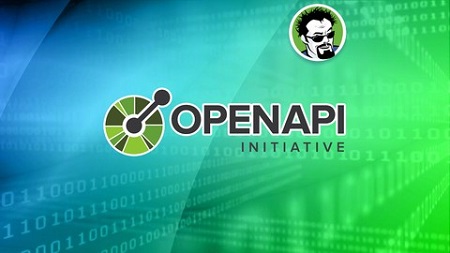
English | MP4 | AVC 1280×720 | AAC 44KHz 2ch | 5 Hours | 1.83 GB
Master OpenAPI (formerly Swagger) to Create Specifications for Your APIs
OpenAPI 3.0 is the leading tool for the documentation of APIs.
Formerly known as Swagger, OpenAPI has a long and established history. In 2010, Swagger started as an open source specification for designing and documenting RESTful APIs.
In 2015, the Swagger project was acquired by SmartBear Software. The Swagger Specification was donated to the Linux foundation and renamed the OpenAPI.
The OpenAPI specification is the cornerstone of a thriving open source community. Simply perform a search for OpenAPI tools and you will find projects for converters, documentation, validators, editors, mock servers, testing tools and much much more!
From the OpenAPI specification, you can generate client side source code for over 50 languages. You can generate server side code for over 40 different languages.
All of these open source contributes start with the OpenAPI specification, which we explore in depth in this course.
You start off the course with learning about what is an API, a review of the HTTP protocol and how it is used in respect to RESTFul APIs.
Then we start looking at OpenAPI and how it applies to documenting RESTFul APIs.
We then start writing an OpenAPI specification using Swagger Hub.
Swagger Hub is a free, easy to use on-line editor for Swagger and OpenAPI specifications.
You will get to create a complete OpenAPI specification for a RESTful web service.
Step by step, you learn how to:
- Edit a OpenAPI specification in Swagger Hub
- Define a OpenAPI specification in YAML
- Add developer information
- Add server information
- Define an API path
- Define an API operation
- Create robust objects with JSON schema constraints
- Improve the quality of your specification with re-useable components.
- Define query parameters
- Define path parameters
- Define GET, PUT, POST, and DELETE operations
- Create API security schemes
- Generate source code with OpenAPI Code Gen
- Use ReDoc to generate robust API documentation
- Use Apache Maven to generate code with OpenAPI Code Gen
This course has numerous assignments and hands on examples to get you comfortable writing OpenAPI specifications.
What you’ll learn
- Learn to define APIs using OpenAPI Specifications
- Create awesome API Documentation with Swagger UI
- Edit OpenAPI Specifications in Swagger Hub
Table of Contents
OpenAPI Introduction
1 Welcome
2 Meet Your Instructor
3 Getting the Most out of your OpenAPI Course
4 Slack Group for OpenAPI Beginner to Guru
Overview of OpenAPI
5 Introduction
6 What is an API
7 HTTP Protocol
8 HTTP Request Methods
9 Why use OpenAPI
10 Pet Clinic on Swagger Editor
11 OpenAPI 2.0 vs 3.0
12 YAML Crash Course
Defining a Microservice with OpenAPI
13 Introduction
14 Swagger Hub
15 OpenAPI Specification
16 OpenAPI Info Object
17 OpenAPI Servers Object
18 OpenAPI Paths Object
OpenAPI Schema
19 Introduction
20 JSON Schema
21 OpenAPI Data Types
22 OpenAPI Objects
23 OpenAPI Enums
OpenAPI Components
24 Introduction
25 OpenAPI Components Object
26 Creating Reusable Customer Object
27 OpenAPI Object Inheritance
OpenAPI Parameters
28 Introduction
29 OpenAPI Parameter Object
30 Describing Query Parameters
31 Describing URL Parameters
OpenAPI Requests
32 Introduction
33 OpenAPI Operation Summaries and Descriptions
34 OpenAPI Operation Tags
35 OpenAPI Operation Id
36 Describing RESTFul Create
37 Describing Response Headers
38 Read Only Properties
39 Describing RESTFul Update
40 Descibing RESTful Delete
41 Describing Additional Responses
42 OpenAPI Callbacks
OpenAPI Security Definitions
43 Introduction
44 OpenAPI Security Scheme
45 Basic Auth with OpenAPI
46 JWT Bearer Token Auth
47 Anonymous Authentication with OpenAPI
OpenAPI Code Gen
48 Introduction
49 OpenAPI Code Gen
50 OpenAPI Generated Java Client
51 OpenAPI Generated Java Server
52 Conclusion
Resolve the captcha to access the links!